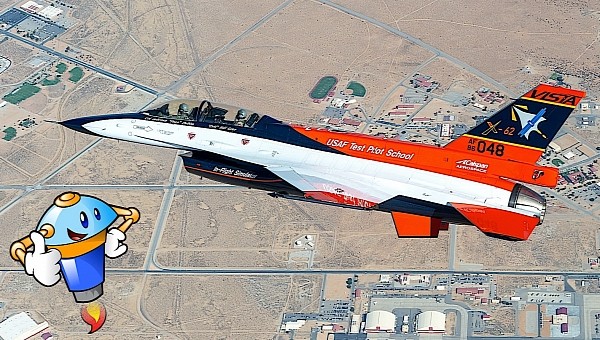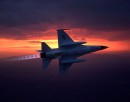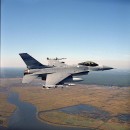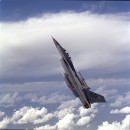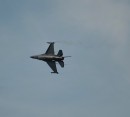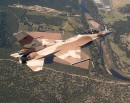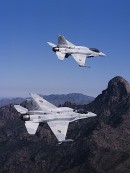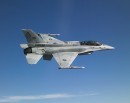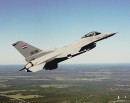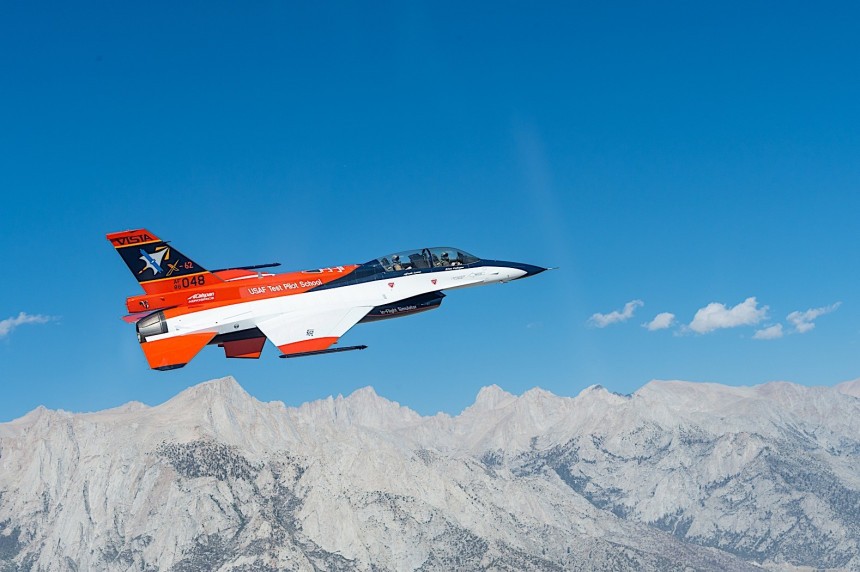With the rise to power of bloated chatbots the likes of ChatGPT and Google’s Bard in recent months, there’s an increased focus on a kind of technology that might forever change our world: artificial intelligence.
Not a new concept by any means, AI, as it’s commonly known, has slowly crept its way into pretty much everything we use on a constant basis these days, from the phones we take photos with to the cars we drive. By any standards, most of the Ais are rudimentary (including these so-called conversational AIs), but their potential to learn and evolve is immense.
We’re not yet at a point where the AI is running the show, and we’re probably still a long way until we reach singularity, but baby steps in that direction are being taken every day. Including military baby steps, and that’s enough to make a lot of people nervous.
The latest piece of news about AI learning how to control weapons and weapons platforms has to do with Lockheed Martin and a product of theirs called VISTA X-62A. VISTA stands for Variable In-flight Simulation Test Aircraft, and we’re basically talking about a tactical trainer aircraft.
Made by Lockheed Martin together with the Calspan Corporation, the plane is in essence a modified two-seater F-16 Fighting Falcon. It is still equipped with a single General Electric engine good for 125 kN of thrust with the afterburner running hot. It can reach a top speed of close to Mach 2 (1,350 mph/2,170 kph) and can fly for 3,200 miles (5,200 km). Unlike its other F-16 siblings, it carries no weapons and is mostly used to test tech and mimic the performance of other aerial machines.
Usually, the VISTA can accommodate pilots, and for the purposes of a recent test conducted by Lockheed Martin, they were probably on board, but none was needed. Instead, a so-called “artificial intelligence agent” took control of the aircraft and kept it afloat for no less than 17 hours.
Lockheed gives no info on the mission profile or the actual AI system involved. We do know the flight happened in December 2022 and departed the Edwards Air Force Base in California, but it was only now made public.
The VISTA does have a series of technologies meant to help it fly itself, including a simulation system developed by Calspan, a following algorithm made by Lockheed, and a system for autonomous control. They all work together with a variety of sensors, but exactly how these come together and just how capable the AI created by them is, that’s anybody’s guess.
The December fight was the first time the AI engaged on a tactical aircraft, as per the team behind the project, but it will not be the last. More flights are planned for the rest of the year, and we’ll probably learn more about the concept as they’re performed.
We’re not yet at a point where the AI is running the show, and we’re probably still a long way until we reach singularity, but baby steps in that direction are being taken every day. Including military baby steps, and that’s enough to make a lot of people nervous.
The latest piece of news about AI learning how to control weapons and weapons platforms has to do with Lockheed Martin and a product of theirs called VISTA X-62A. VISTA stands for Variable In-flight Simulation Test Aircraft, and we’re basically talking about a tactical trainer aircraft.
Made by Lockheed Martin together with the Calspan Corporation, the plane is in essence a modified two-seater F-16 Fighting Falcon. It is still equipped with a single General Electric engine good for 125 kN of thrust with the afterburner running hot. It can reach a top speed of close to Mach 2 (1,350 mph/2,170 kph) and can fly for 3,200 miles (5,200 km). Unlike its other F-16 siblings, it carries no weapons and is mostly used to test tech and mimic the performance of other aerial machines.
Lockheed gives no info on the mission profile or the actual AI system involved. We do know the flight happened in December 2022 and departed the Edwards Air Force Base in California, but it was only now made public.
The VISTA does have a series of technologies meant to help it fly itself, including a simulation system developed by Calspan, a following algorithm made by Lockheed, and a system for autonomous control. They all work together with a variety of sensors, but exactly how these come together and just how capable the AI created by them is, that’s anybody’s guess.
The December fight was the first time the AI engaged on a tactical aircraft, as per the team behind the project, but it will not be the last. More flights are planned for the rest of the year, and we’ll probably learn more about the concept as they’re performed.
